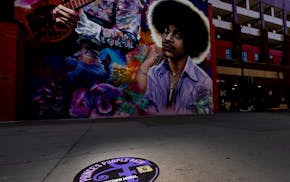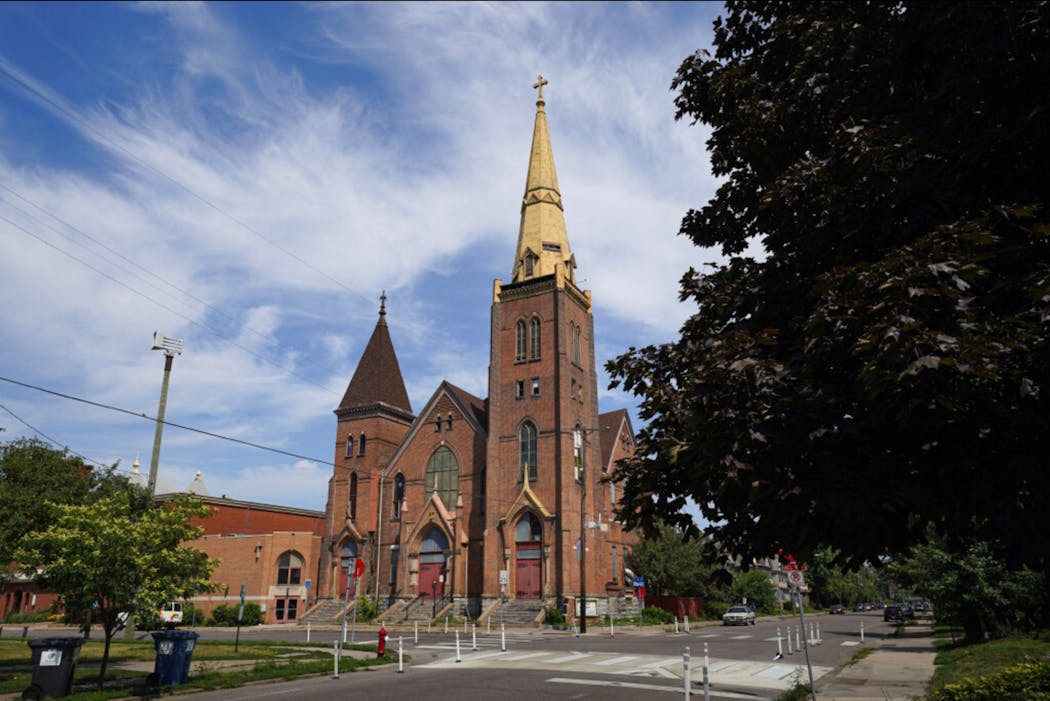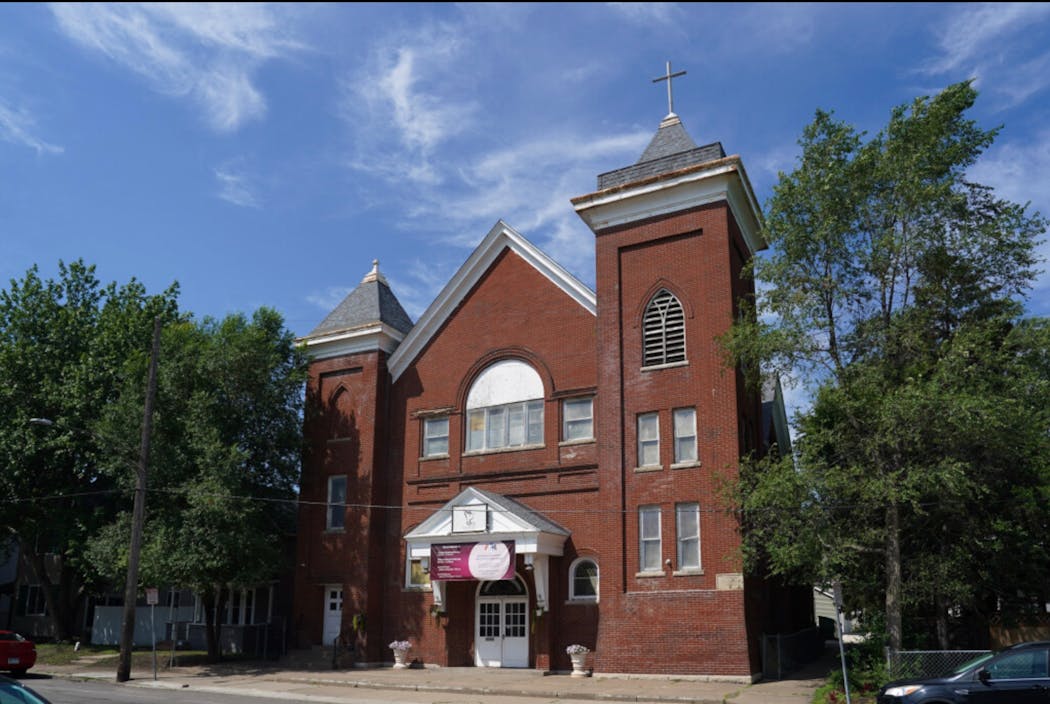On Twitter a Minneapolis-boosting account proclaimed an impressive fact: A block in Minneapolis, according to Guinness World Records, is the only block in the world with four churches. Google it, and you'll find a few more sources claiming the same thing.
You might think: Really? The world? More churches than a street in Rome, the home office? More than New York, with its long, densely packed blocks? Little old Minneapolis, world-beating church-having block champ?
But even if it's not a record-breaker, four churches in one block is remarkable. Especially since they're all still open.
Consider first the period in which these buildings were conceived and constructed. Churches built before World War II hail from an era of architecture when the function of a building was instantly recognizable by its form. Unlike modern religious structures — which could be an airport terminal or a racquetball facility if you pried off the religious symbols — a church looked like a house of worship.
A church had a specific purpose: It was a place to gather as a community and channel prayers and songs upward. The steeple had a practical function: It told you this was a church, not a lodge hall. It also was a symbol, expressing man's ability to manifest faith, and shape it so it tapered to a point where it touched the firmament, merging and connecting.
In the late 1800s, Minneapolis' immigrant communities were keen on building churches not only as places to worship, but for practical cultural solidarity, as well. The Danes would have one church, the Swedes, the Germans, the Norwegians each another. Even the English Lutherans had their own. Two, in fact.
By 1889, Minneapolis had 151 churches, according to the Minneapolis Tribune, which added, with customary American pride, that those structures were worth more than $4 million. Even better: They were beautiful.
"The number and the architectural beauty of the churches in Minneapolis are always the subject of comment among visitors," read the Tribune article, "and they are as famous almost the world over, as are the great flour mills." It went on to assert, "Some of the church buildings here will compare with the largest in the large Eastern cities." A member of a church delegation from Brooklyn concurred, declaring the First Baptist Church "superior" to anything he had seen.
Between Madison and Monroe
Three of the churches on the world-record block are small and humble, at least to modern eyes. One is larger, and more confident, and hence suggests a certain amount of prosperity and popularity.
The Christ Family Kingdom Center (697 13th Av. NE.), formerly Emanuel Lutheran, was built in 1899. It's the ideal turn-of-the-century church, a stripped-down Gothic revival, two towers, stained glass, brick. Doors with large, elaborate hinges that wouldn't seem out of place in an Errol Flynn swashbuckler movie. It's the sort of building that anchors not just a block, but a community — a landmark, a point of reference, a statement of civic solidity and spiritual solidarity.
Just up the block at 1424 NE. Monroe St., the Minneapolis Apostolic Church is much less ornate and appears a bit weathered by time. The lunette that once held a stained-glass window is covered with wood. But its very ordinariness gives it a stolid dignity, as if what it says to the street is less important than what it says to the congregants inside.
Around the corner, at 1429 NE. Madison St., is the Tullu Rajota Saints Peter and Paul Church. It's fairly plain and humble, except for four small steeples that surround the main spire. Like many city churches, it has the cloudy plastic shields over its stained-glass window, a shield against impious vandals.
Finally, there is — or was — Elim Church at 685 13th Av. NE. It was dedicated on May 7, 1905, having cost $17,000 to build. It was constructed of "Menomenie Brick," according to the Minneapolis Journal, and had "three very large windows ... done in allegorical design." The windows displayed the resurrection, the Rock of Ages and "a reproduction of the famous painting of Christ at Gethsemene."
The church was dissolved in early 2023, merging with the Mill City Church. But the doors still open on Sunday, as they do at every other church on the block. The names and congregations may change, but the steeples still point in the same direction.
Now, as for the world record, it was noted in the 2007 "AIA Guide to the Twin Cities." Guinness, however, disavows all knowledge. An email inquiry resulted in a swift response from a Guinness spokesperson: "We do not currently monitor a similar record title."
When asked if Guinness ever bestowed such a record, the Guinness spokesperson replied: "We do not currently monitor a similar record title."
But most Minnesotans wouldn't be surprised that the industrious and pious folk of the city's early days built four churches on one block. In fact, you might only be surprised there wasn't a fifth.

Minneapolis native Evren Ozel advances to finals of Van Cliburn International Piano Competition

How many of Minneapolis' new 'Purple Path' sidewalk signs for Prince fans can you find?
![Pepe Willie stood for a portrait outside the Capri Theater, which is undergoing a major renovation, in Minneapolis. ] Shari L. Gross • shari.gross@s](https://arc.stimg.co/startribunemedia/4TPIVGPZLESDCIL3ZJ4J4T4ZDU.jpg?h=91&w=145&fit=crop&bg=999&crop=faces)
Pepé Willie, mentor to Prince and Morris Day, dies at 76

Your ultimate guide to eating and drinking in downtown St. Paul






![The Lowry Avenue Bridge frames a frosty skyline before dawn Wednesday, Dec. 29, 2021 in Minneapolis, Minn. ] DAVID JOLES • david.joles@startribune.c](https://arc.stimg.co/startribunemedia/CF77DJLAZ3L73TCMVC2GGLYXDA.jpg?w=600&h=600&auto=format%2Ccompress&cs=tinysrgb)